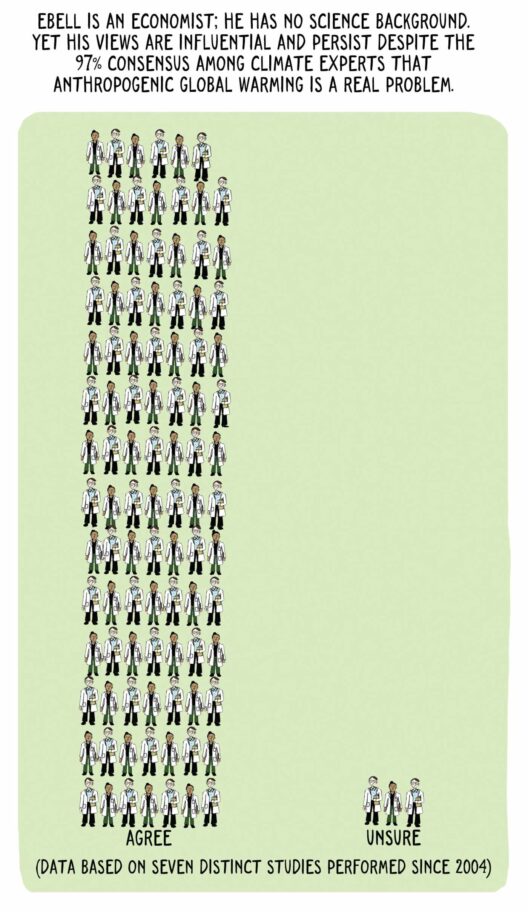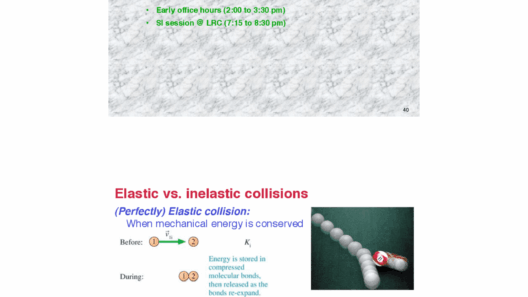Have you ever pondered whether kinetic energy is conserved during an explosion or recoil? This question not only stimulates curiosity but also beckons a deeper examination of fundamental physics principles. At the core of this inquiry lies the law of conservation of energy, an essential tenet that states energy within a closed system remains constant, although it may transition from one form to another. Nevertheless, the intricacies of kinetic energy during rapid, high-energy events such as explosions and recoil can create a playful paradox.
To initiate this exploration, it is imperative to comprehend what kinetic energy entails. Kinetic energy, defined as the energy an object possesses due to its motion, is contingent upon its mass and the square of its velocity. Mathematically, it is articulated as KE = ½ mv², where KE signifies kinetic energy, m denotes mass, and v represents velocity. This equation embodies a crucial principle: the swifter an object moves, the more kinetic energy it harbors. Therefore, in scenarios like explosions and recoil, one might expect some consistency in kinetic energy conservation, but this is where complexities arise.
Explosions, defined as rapid and violent expansions resulting from a release of energy, serve as prime examples to dissect. When an explosive charge detonates, it generates high pressure and heat, resulting in the rapid expansion of gases. Here, the energy from the chemical reaction transforms into kinetic motion. Initially, a large amount of potential energy encapsulated in the explosives is converted into various forms of kinetic energy—shrapnel flying in diverse directions, air molecules dispersing, and even the resultant shockwaves traveling through the surrounding environment.
Yet, in the moment of the explosion, kinetic energy is not conserved in the traditional sense. Although the total energy is conserved—considering thermal energy, sound energy, and the energy carried away by the shrapnel—only a fraction of that energy transforms into useful kinetic energy of the fragments. Thus, the chaotic nature of an explosion leads to a redistribution of kinetic energy rather than its conservation. The explosive event exemplifies that while energy cannot be created or destroyed, its kinetic manifestation can indeed fluctuate dramatically.
Now, let us turn our attention to recoil, a phenomenon occurring when objects violently separate after a forceful interaction, such as a cannon firing a projectile. In this scenario, when the cannon discharges, a significant amount of energy is transferred to the cannonball. The conservation of momentum is pivotal here. According to the law of conservation of momentum, the total momentum before and after the event must remain equated. When the cannonball shoots forward, the cannon itself experiences an opposing motion, recoiling backward. Both mass and velocity play critical roles in this interaction.
Returning to the concept of kinetic energy, while we recognize the conservation of momentum in recoil, the conversion of energy presents a more nuanced story. The kinetic energy of the cannonball, determined by its mass and the square of its velocity, increases substantially during the explosion. However, the cannon’s recoiling effect also possesses kinetic energy but to a lesser degree due to its greater mass compared to the projectile. The recoil paradox demonstrates that the work done by the explosion is split between the forward motion of the ball and the backward motion of the cannon. Ultimately, the kinetic energy in focus is not entirely conserved; what was initially there gets partitioned and transformed into different kinetic energies of the resulting objects.
A captivating aspect of explosions and recoil is the interplay between system types. In closed systems, energy transformations exhibit distinct characteristics compared to open systems. An explosion in an isolated environment, where no energy escapes, creates a different dynamic than one occurring in open air, where energy dissipates through sound waves and thermal radiation. Consequently, the conservation of energy remains applicable, albeit with the understanding that kinetic energy is distributed among multiple forms and directions.
Intriguingly, the implications of kinetic energy conservation also extend into the realm of physics experiments and theoretical applications. Unique experiments involving collisions—such as elastic and inelastic—further illuminate the intricacies of kinetic energy during high-velocity interactions. In elastic collisions, both momentum and kinetic energy are conserved. Conversely, in inelastic scenarios, momentum is conserved but kinetic energy transforms into other forms of energy, including heat, sound, and deformation of objects. These variances do not negate the laws of physics; they merely underscore the complexity inherent in real-world phenomena.
Additionally, understanding kinetic energy conservation in explosions and recoil can enhance our comprehension of various real-world applications. From engines and propulsion systems to the design of safety mechanisms in vehicles, recognizing energy transformations can pave the way for innovative advancements. Engineers frequently leverage these principles to create efficient systems that can withstand and mitigate the effects of violent shakeups, further showcasing the importance of such physics concepts.
In conclusion, the question of whether kinetic energy is conserved in an explosion or recoil invites a multifaceted exploration. While the overarching law of energy conservation prevails, kinetic energy’s behavior in these scenarios is a testament to complex interactions and energy transfer dynamics. The playful notion of conservation leads to deeper inquiries about energy’s multifarious forms and transformations. Ultimately, the fascinating dance of kinetic energy in response to explosive forces and recoil mechanisms not only captivates those delving into physics but also highlights the intricate balance of nature’s laws.








